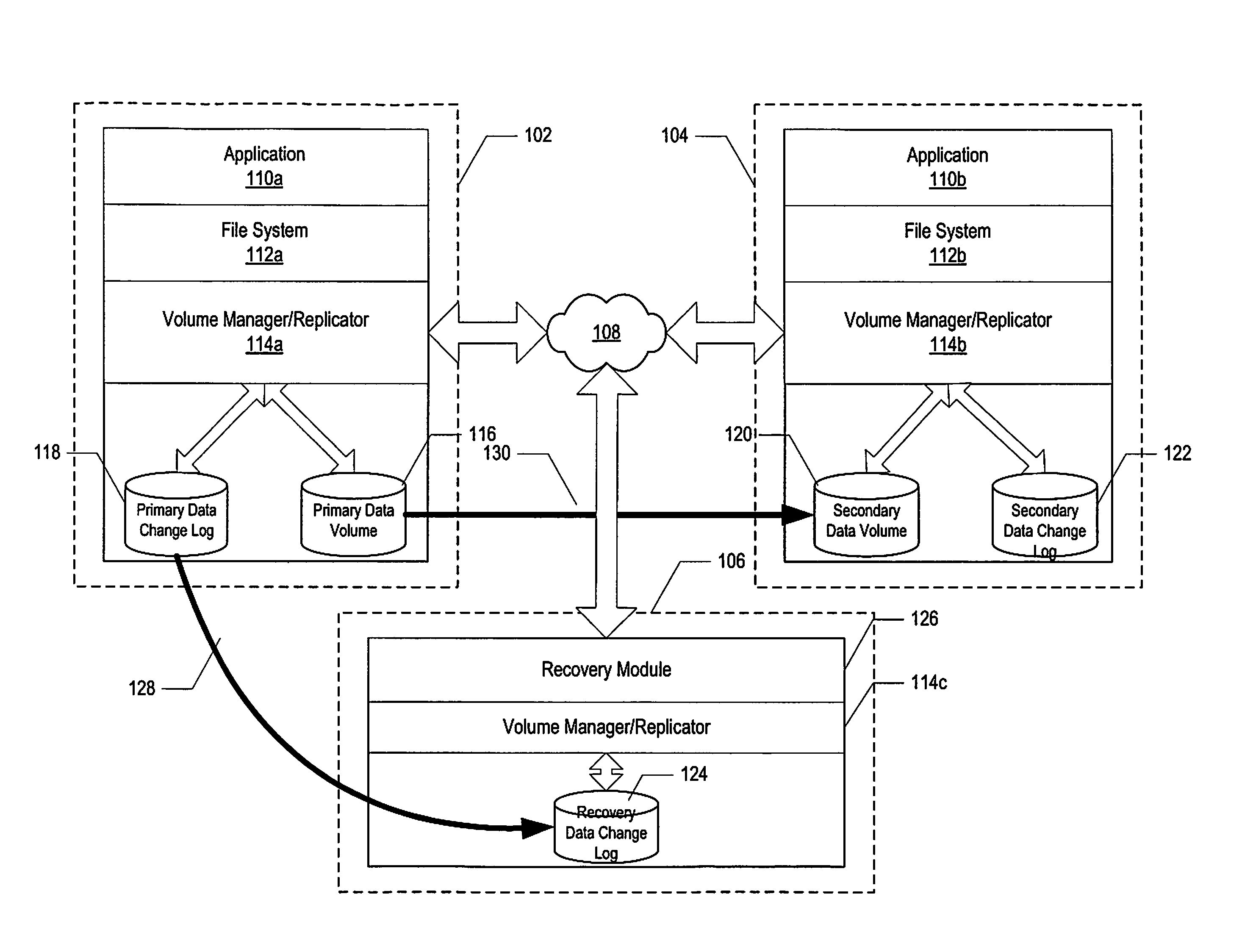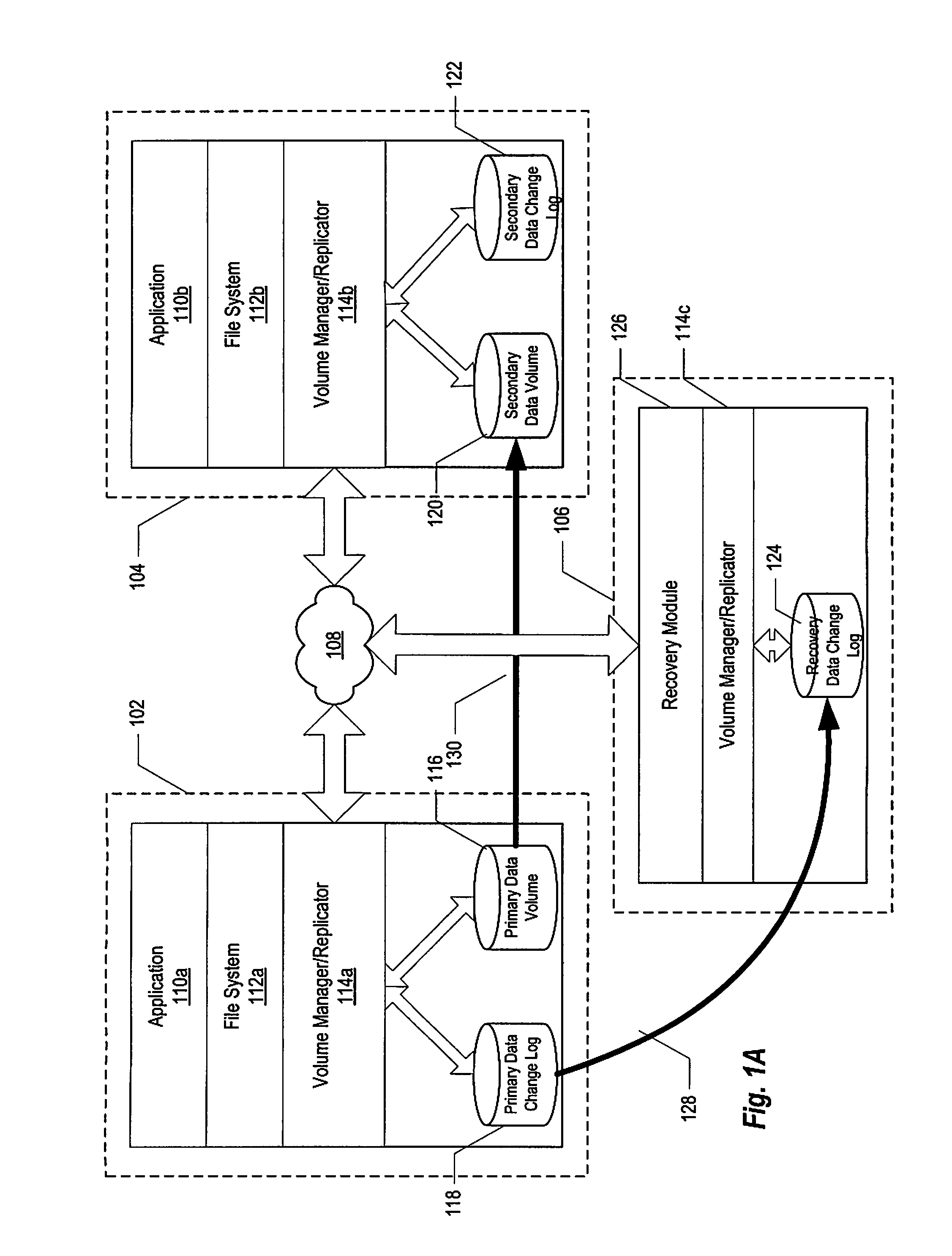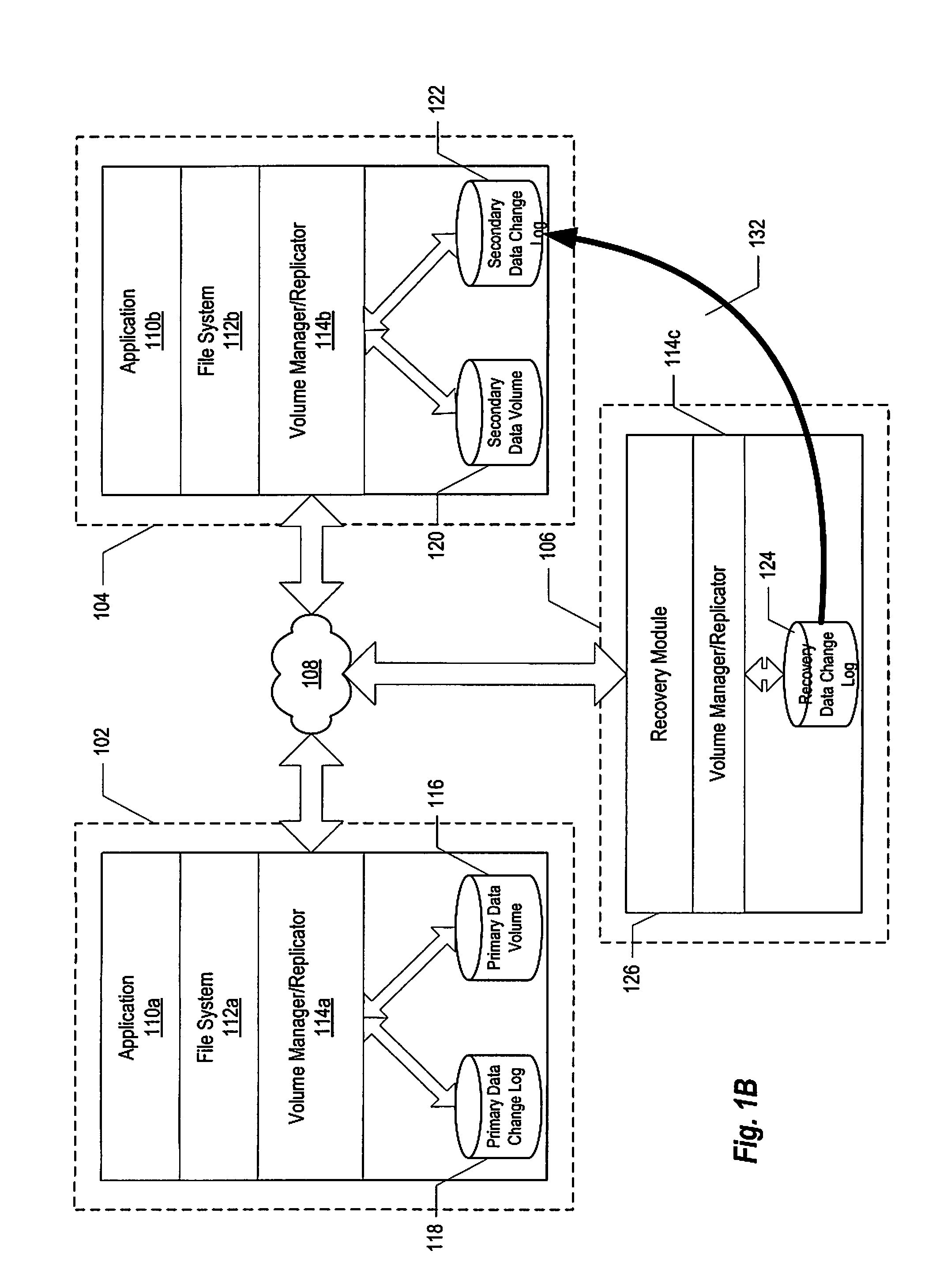Method and system of replicating data using a recovery data change log
a data change and recovery technology, applied in the field of data storage and retrieval, can solve the problems of serious negative consequences for the continued viability of a business, permanent data loss, and serious damage to business operations, and achieve the effect of quick and reliable replication of data, reducing replication costs and write operation latency
- Summary
- Abstract
- Description
- Claims
- Application Information
AI Technical Summary
Benefits of technology
Problems solved by technology
Method used
Image
Examples
first embodiment
[0032]FIG. 1B illustrates a data replication system operating in a recovery mode according to the present invention. The illustrated data replication system of FIG. 1B includes, as described with respect to FIG. 1A herein, a primary node 102, a secondary node 104, and a recovery node 106 communicatively coupled with one another using a communications network 108 including one or more communications links. In the described recovery mode of the illustrated embodiment of FIG. 1B however, no replication occurs between primary node 102 and secondary node 104 and no data associated with write operations at primary node 102 is mirrored, replicated, or otherwise transferred or copied between primary node 102 and recovery node 106. Rather, recovery data change log 124 is used in the illustrated embodiment to update secondary data volume 120. Within the presently described invention embodiments the term “update” includes the resynchronization of a node or data volume (e.g., the resynchronizat...
second embodiment
[0035]FIG. 1C illustrates a data replication system operating in a recovery mode according to the present invention. The illustrated data replication system of FIG. 1C includes, as described with respect to FIGS. 1A and 1B herein, a primary node 102, a secondary node 104, and a recovery node 106 communicatively coupled with one another using a communications network 108 including one or more communications links. In the described recovery mode of the illustrated embodiment of FIG. 1C, no replication occurs between primary node 102 and secondary node 104 and no data associated with write operations at primary node 102 is mirrored, replicated, or otherwise transferred or copied between primary node 102 and recovery node 106. Rather, recovery data change log 124 is used in the illustrated embodiment to update secondary data volume 120.
[0036]In the illustrated embodiment of FIG. 1C, secondary data volume 120 is updated by copying one or more blocks of data, each block of data including ...
PUM
 Login to View More
Login to View More Abstract
Description
Claims
Application Information
 Login to View More
Login to View More - R&D
- Intellectual Property
- Life Sciences
- Materials
- Tech Scout
- Unparalleled Data Quality
- Higher Quality Content
- 60% Fewer Hallucinations
Browse by: Latest US Patents, China's latest patents, Technical Efficacy Thesaurus, Application Domain, Technology Topic, Popular Technical Reports.
© 2025 PatSnap. All rights reserved.Legal|Privacy policy|Modern Slavery Act Transparency Statement|Sitemap|About US| Contact US: help@patsnap.com



